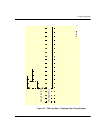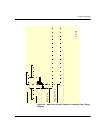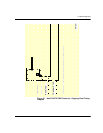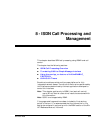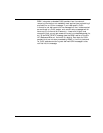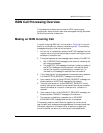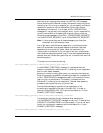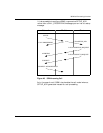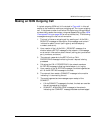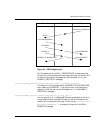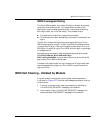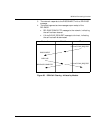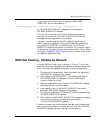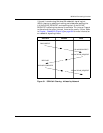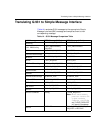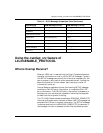
ISDN Call Processing Overview
November 2009 321
Making an ISDN Outgoing Call
A typical outgoing ISDN call is illustrated in Figure 49. In this call
scenario, the module is making an outgoing call. During an outgoing
call, if the phone number is more than 20 digits long, the application
automatically sends the number using overlapped dialing (See ISDN
Overlapped Dialing on page 323 for more information). The following
message exchange is relative to the module:
1. The host initiates an outgoing call by sending an L4L3mCALL_
REQUEST message to the module; this message must contain
information about the call (calling party and called party
numbers, and so on).
2. Upon receipt of the L4L3mCALL_REQUEST message, the
module issues a SETUP message to the network; this message
must contain information about the call (calling party and called
party numbers, and so on).
3. The network responds to the SETUP with a CALL
PROCEEDING message indicating the call request is being
processed.
4. Following the CALL PROCEEDING, the network sends an
ALERTING message indicating the called party is ringing.
5. Upon receipt of the ALERTING message, the module generates
an L3L4mALERTING message to the host.
6. The network then sends a CONNECT message to the module
indicating it is connecting the call.
7. The module generates two messages upon receipt of the
CONNECT.
L3L4mCONNECT message to the host; the host can consider
the call connected at this point
CONNECT ACKNOWLEDGE message to the network
indicating the CONNECT message has been acknowledged



